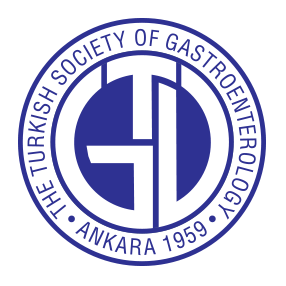Background/Aims: The aim of this study is to investigate whether the creeping fat (CF) finding evaluated by computed tomography (CT) can be used as a noninvasive marker to predict disease prognosis.
Materials and Methods: The study comprised 128 Crohn’s patients, aged 18-70, who had CT scanning for a variety of reasons. Patients were retrospectively analyzed in 3 groups (31 patients with operation due to stenosis, 39 patients with unoperated stenosis, and 44 patients without stenosis). The CF Index BSACR (bowel surface area coverage ratio), CF density, and visceral-subcutaneous fat ratio (VSFR) findings were evaluated by CT compared between the groups.
Results: The median VSFR was higher in the stenosed group compared to the non-stenosed group (0.7 vs 0.4; P = .003). The CF index BSACR was 37.5% (27.1% vs 18.2%; P = .001), and the rate of those with a CF index BSACR above 37.5% was higher in those with stenosis compared to those without. The odds of stenosis were 17.07 times (odds ratio [OR] = 17.07; P = .007) higher in those with a CF index BSACR of 37.5% and 184.57 times (OR = 184.57; P = .001) higher in those with a CF index BSACR of 50% or more compared to those with no involvement or a CF index BSACR of 25% or less.
Conclusion: The CF index correlated with stricturing disease and may be a noninvasive radiologic marker that predicts disease prognosis.
Cite this article as: Demiral N, Özdemir FAE, Kıvrakoğlu F, et al. Can creeping fat be a prognostic factor in Crohn’s disease? Turk J Gastroenterol. Published online November 12, 2025. doi:10.5152/tjg.2025.25259.


_page-0001.jpg)

.png)
.png)